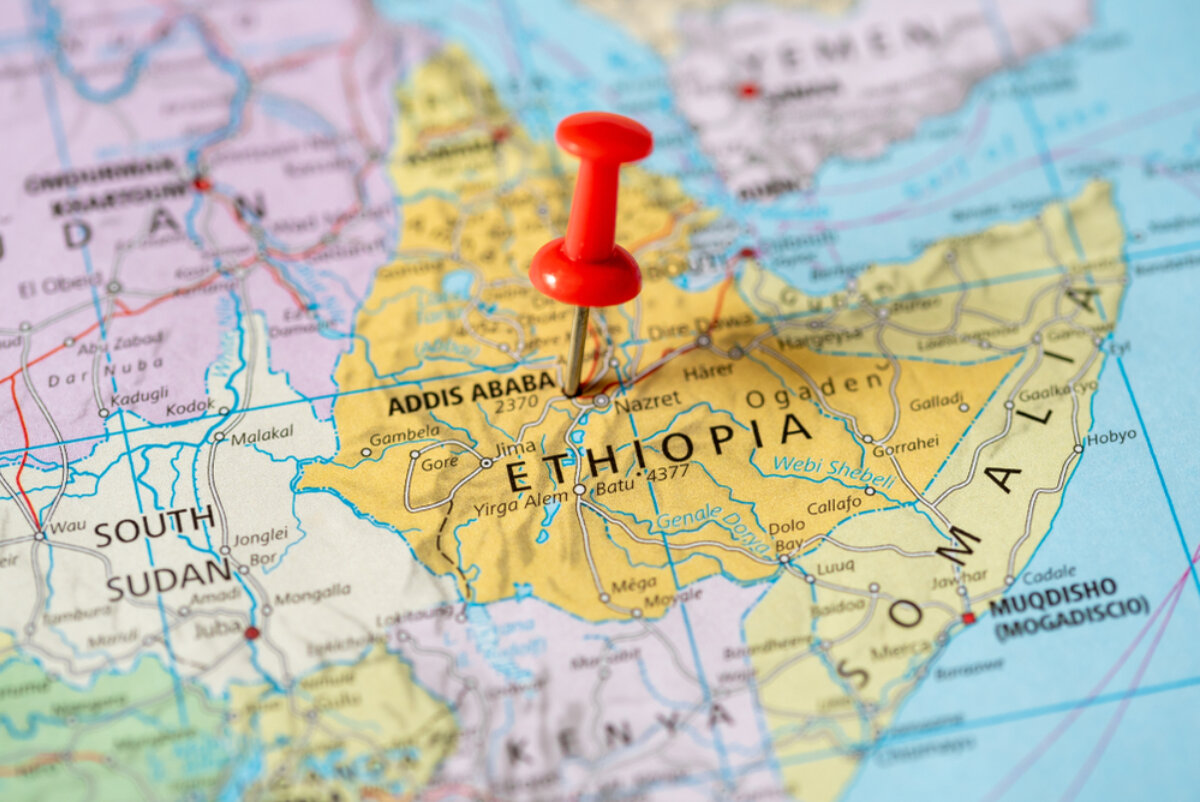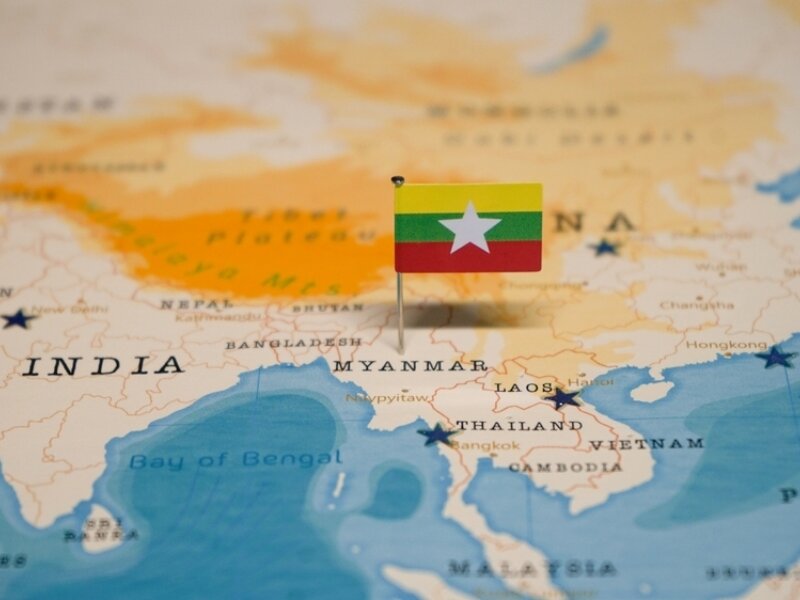Ethiopia needs a negotiated settlement
The conflict in Ethiopia is still far from being resolved, but the beginning of negotiations between the two sides might be an important step forward for the country and the entire Horn of Africa.

As the world’s attention is entirely diverted to the Russian offensive in Ukraine and its implications for global peace and security, the conflict in Ethiopia continues to remain unsolved. Although it has moved, in recent weeks, from high to low intensity, prospects for a peaceful and negotiated settlement remain uncertain. Nevertheless, negotiations between the Federal Government of Ethiopia and the rebel forces in the outer regions – notably the Tigray People’s Liberation Front (TPLF) and the Tigray Defence Forces (TDF) in Tigray, and the Oromia Liberation Army (OLA) in Oromia – are a key step for the stability of the country and the entire region.
International attention on Ethiopia’s internal war started to diminish when, on 20 December 2021, the TDF announced it would retreat to Tigray – its region of origin – a consequently withdraw its forces from the Afar and Amhara regions. This decision came after a month-long conflict with the Ethiopian National Defence Forces (ENDF), during which Prime Minister Abiy Ahmed first organised a massive recruitment of militias drawn from the civilian population, then got military aid (especially armed drones) from friendly foreign countries such as Turkey, the United Arab Emirates, China and Russia, and finally announced that he would go into battle himself. The withdrawal of the Tigrayan rebels, followed by the Prime Minister’s decision to stop the counteroffensive, created a more conducive environment to push for a peaceful resolution of the conflict.
On 29 December 2021, the Ethiopian Parliament voted for the establishment of a Commission for National Dialogue. This was followed by the Government’s announcement that it would pardon and release high-profile political prisoners, including members of the TPLF and leaders from the Amhara and Oromo tribes. In January 2022, during the Orthodox Christmas celebration, PM Abiy Ahmed called for ‘national reconciliation’. However, the TPLF and OLA were not included in the process and are still designated as terrorist groups. Although the Government was lauded for taking steps towards solving the conflict, there was a glaring underhandedness in the whole process. The exclusion of the real antagonists in the war, TPLF and OLA, raised questions on whether Abiy Ahmed’s government was on a genuine quest for peace or engaged in a cover-up operation to reduce international pressure – especially by the United States, which was threatening sanctions – and buy time with a different purpose. As expected, the lull after the TDF’s retreat came to an end on 25 January 2022, when the Tigrayan rebels announced their advance into the Afar region, justifying the operation with the need to neutralise the threats from pro-government forces, notably Afar regional special forces and the Red Sea Afar Forces, seen as a proxy to Eritrea – a major supporter of PM Abiy Ahmed’s military campaign against Tigray.
Failed attempts at a peaceful solution
Since the conflict erupted in November 2020, numerous attempts have been made to get the warring parties to negotiate a peaceful way out of the crisis. However, none has succeeded because the mediators were unable to reconcile the preconditions requested by the armed groups and the intransigent approach shown so far by the Prime Minister and his main allies, Eritrea and the Amhara elites in his government. The numerous, uncoordinated negotiation attempts are a reflection of the fluctuating waves of conflict in Ethiopia and of the crisis of multilateralism that has become so visible in the Ukraine-Russia context.
A first attempt to mediate the conflict in Ethiopia was initiated by the African Union (AU) shortly after hostilities broke out in Tigray on 6 November 2020, when Prime Minister Abiy Ahmed ordered airstrikes on military targets in the region. The AU appointed the former President of Mozambique, Joaquim Chissano, the former President of Liberia, Ellen Johnson-Sirleaf, and the former President of South Africa, Kgalema Motlanthe as Special Envoys to look into mediation talks. However, the Ethiopian Prime Minister insisted that he would only talk after capturing the Tigrayan leaders whom he accused of mutinying against the central government. The crisis was aggravated by the participation of both ethnic Amhara militias and Eritrean troops in fighting alongside the Ethiopian army. On 23 November 2020, amidst calls from the international community for the Federal Government to take the mediation route, Abiy Ahmed announced that the Ethiopian military would undertake the ‘final and crucial phase’ of the law-enforcement operation, de facto closing all avenues to mediation.
By January 2021, the war entered a new phase: the TDF had scaled up its offensive against the Ethiopian military and its allies, forcing them to withdraw from the rural parts of Tigray, moving the war closer to urban areas. As the fighting went on in Tigray, on 19 February 2021, the TPLF communicated to the Federal Government eight conditions that would have to be met before they could engage in talks. These included: permitting free movement of humanitarian food assistance; the withdrawal of Eritrean troops from Tigray; the appointment of an international mediator; and the removal of the interim administration chosen by the Federal Government. However, on 17 May 2021, the Ethiopian Ministry of Foreign Affairs replied, saying that the TPLF would not be part of any national dialogue because it was an outlawed group, designated as a terrorist organization by the Ethiopian parliament on 6 May 2021.
On 28 June 2021, the TDF/TPLF managed to overrun the Ethiopian Army and regained control of Mekelle. As Tigrayan forces quickly expanded their control over other cities and areas of Northern, Eastern and Southern Tigray, the Government declared a unilateral ceasefire. Among the diplomatic community, a short sigh of relief emerged: the United States and the African Union welcomed the ceasefire and urged the TPLF to do the same to allow for a peaceful resolution. However, the unilateral ceasefire was a disingenuous move by a federal government on the back foot. The government of Tigray reiterated its demands for the withdrawal of Ethiopian and Eritrean forces, as well as Amhara militias, from Tigray, the end of the blockade and the release of all Tigrayan prisoners as a precondition for taking part in any talks with the government about a ceasefire. Additionally, they called on the United Nations to form an independent body to investigate crimes committed during the war and oversee the ceasefire. The Federal Government never made any comment about the TPLF’s demands, but rather embarked on rounding up more civilian ethnic Tigrayans in the capital, Addis Ababa, and in other areas. Therefore, Tigray vowed to pursue its enemies in a bid to wear down their fighting capabilities.
The situation of civilians in Tigray continued to worsen with no access to humanitarian aid, as the Federal Government continued denying accusations of creating a blockade and instead blamed the rebels, saying it was a plot to gain sympathy. In reaction, the TDF continued pushing into Afar and Amhara regions, claiming that their intent was to remove the blockade to open a corridor for humanitarian aid to enter Tigray, and accused the Federal Government of showing no will to find a peaceful solution to the conflict. The Government did not back down; the presidents of Amhara and Afar regions called on their people to arm themselves and protect their land, as Prime Minister Abiy Ahmed called for a massive conscription program and waged more war, recalling the battle of Adwa. This was a clear indication that efforts to strike a deal between the two sides had again failed to bear any fruit.
The TDF and OLA struck an alliance and continued advancing towards the capital. In parallel, the Federal Government did not break under the pressure from the international community, as a polarised United Nations Security Council failed to speak with one voice over the conflict. On 11 October 2021, the TPLF’s spokesman Getachew Reda released a statement saying that the Ethiopian army, in coordination with forces from North Amhara, had launched a ground offensive against Tigrayan forces. The government, through the Prime Minister’s spokesperson, Billene Seyoum, justified the offensive, saying it had the responsibility to protect all Ethiopian citizens against acts of terrorism. The situation was further exacerbated when the Federal Government launched airstrikes targeting Tigrayan facilities. In response, the Tigrayans continued advancing southwards in a bid to block the Djibouti-Addis road and railway connections and made territorial gains in the Amhara region, getting closer to Addis Ababa, as the OLA advanced from its positions in Oromia to try and join forces with the TDF.
At this point, the alarm about the escalating crisis was deepening, with the United States and the African Union redoubling their efforts to push for talks between the warring parties. The African Union’s special envoy to the Horn of Africa, former Nigerian president Olusegun Obasanjo, held meetings with the warring sides, with the aim of finding common ground for a peaceful solution. On 14 November 2021, the President of Kenya, Uhuru Kenyatta, visited Ethiopia, where he met with the Prime Minister, the President and other key political leaders. His visit came a day before the United States Secretary of State, Antony Blinken, arrived in Nairobi, Kenya, with the aim to amplify the United States’ resolve to put an end to the crisis in Ethiopia.
The Ethiopian government, in turn, listed conditions that needed to be met before any negotiations took place. They wanted the TDF to withdraw from the Afar and Amhara regions, stop the fighting and recognise the legitimacy of the current government. Although the Government insisted that no decision was made to go into talks with the rebels, and Addis Ababa’s belligerent rhetoric seemed to indicate the opposite, the submission of conditions was an indication that there was a slim chance for talks. However, the TPLF reiterated that moving out of the two regions before a ceasefire was out of question, and again demanded the removal of the blockade to allow humanitarian assistance to reach the civilian population, requesting the withdrawal of all Ethiopian and Eritrean forces as well as Amhara militias from Western Tigray, which remained under control of these forces.
Developments on the ground over the month of November 2021 indicated that there was no end in sight for the crisis. In fact, as the joint rebel forces continued closing in on Addis Ababa from multiple directions, on 26 November, state-run media released footage of the Prime Minister Abiy Ahmed on the battlefield, days after he had announced he would lead his army from the frontline. Abiy Ahmed had earlier tweeted that “the time has come to lead the country with sacrifice,” and called on Ethiopians to take up arms. The Ethiopian military massively used armed drones, received from foreign allies in earlier weeks, at times hitting civilian targets indiscriminately. The use of drones changed the course of the conflict: in spite of a having a regular army in disarray and poorly trained militias, the Federal Government scored significant wins from the air. Unable to defeat air superiority, the TDF and OLA had to withdraw to avoid major human and material losses. As a consequence, the Ethiopian federal ground forces re-took the town of Chifra, in Afar region, from Tigrayan rebels on 28 November and, on 2 December, took back the town of Lalibela, a famed landmark in Amhara region.
Amidst these new rounds of fighting, international polarisation clearly manifested itself. On 1 December 2021, Chinese Foreign Minister Wang Yi made a state visit to Addis Ababa and expressed confidence in Ethiopia's capacity to solve the crisis without foreign interference. Shortly afterwards, US Secretary of State Blinken issued warnings about the sanctions that could be imposed against those responsible for the conflict and could derive from President Biden’s Executive Orders of September 2021. Amidst these divergent positions, the UN Security Council continued to be unable to propose a sustainable pathway to negotiations.
This phase of war was filled with uncertainty. The Tigrayan forces and OLA, who just weeks earlier were determined to march to Addis Ababa, continued retreating. On the other hand, the government continued splashing news of victory thanks to the extensive use of armed drones. The humanitarian situation in the country continued to deteriorate – a concern shared by Secretary Blinken and President Kenyatta who called for unhindered humanitarian aid for affected communities – and the risk of a descent into further violence continued to grow. Despite the worrying situation, there was still no concrete hope of a breakthrough in getting the two warring sides to resolve the conflict peacefully, or even agree to a ceasefire.
Obasanjo was able to meet the TPLF leaders in Mekelle and got the formal backing of the international community as the only option for negotiations. However, both the African Union and Obasanjo have been seen by the rebels as biased and too close to the Federal Government, which de facto killed any chances for Obasanjo to play a relevant role towards a solution of the Ethiopian crisis.
No end in sight: what next for Ethiopia?
The low-scale fighting that broke out in the Northern Afar region towards the end of January 2022 has again impeded most humanitarian aid from accessing the neighbouring Tigray region. As the TPLF advanced again towards the motorway that links landlocked Ethiopia to Djibouti, it is clear that there is a dire need to create a pathway for dialogue to prevent a rapid escalation of military operations, which could see Eritrea being further involved and, possibly, Sudan being dragged into a complex regional conflict.
In recent weeks, some signs of optimism have emerged. The Kenyan Presidency has remained at the forefront of an international initiative, backed by the United States and other non-permanent Members of the UN Security Council. This attempt aims at bringing back “informal talks” between the clashing sides, with the support of international envoys, in preparation for more official peace negotiations. It is key not only that the parties understand the high risks involved in a new escalation of the military crisis, but also that the mediators understand the complexity of the situation on the ground, bringing pressure to bear on Prime Minister Abiy Ahmed for a more genuine approach, for a stop to operations involving armed drones, and for keeping extremists in his administration and in Asmara at bay. Failing to quickly secure negotiations at this stage will leave only one card on the table: a decisive military engagement on either sides, which would have unpredictable consequences. As the animosity remains high between the Federal Government and the rebels, this option is still on the mind of all the warring sides. With global geopolitical tensions currently generated by the conflict in Ukraine, it is key that the mediators intensify their efforts to initiate formal talks before any party to the conflict in Ethiopia or any external force might consider using the country as a proxy to pursue other international agendas.



